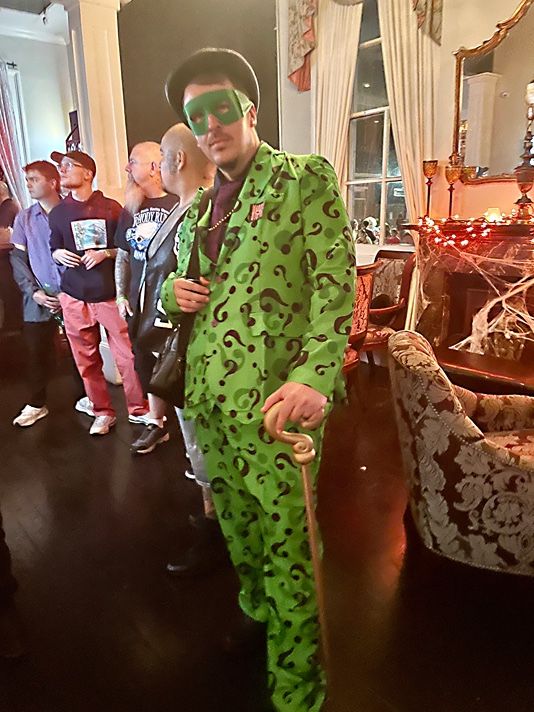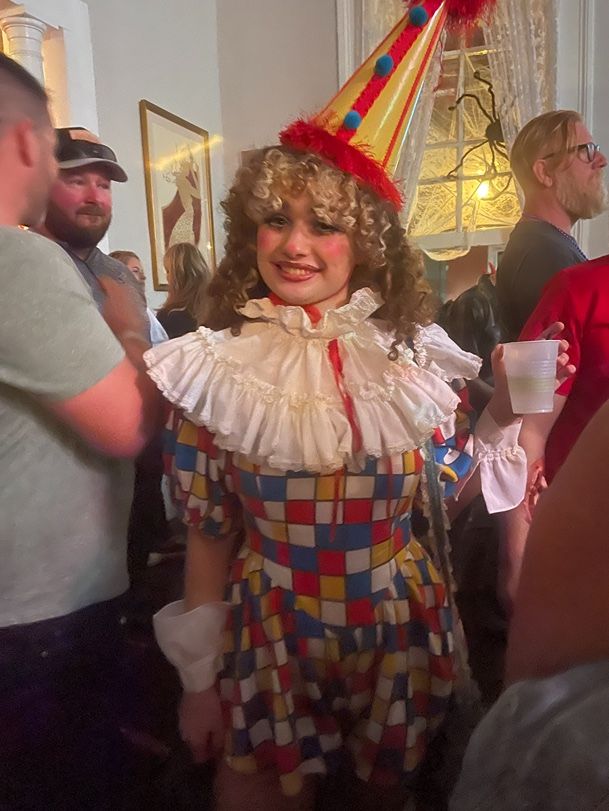The Culture of Costumes in New Orleans
Costuming is serious business in New Orleans. From wigs to hats to everything in between, locals will find any reason to throw on their most elaborate getup and have a good time. Because the city is a melting pot of cultures, there is no wonder why citizens love to try out new things while also appreciating different looks.
The diverse heritage has created a unique and vibrant cultural scene where people celebrate and embrace their roots through various art forms, including costuming.
The magic isn't in just wearing the costumes but also in creating them. Costuming here is an art form, and it's common for locals to spend long periods creating and placing much thought into their costumes. No matter the occasion, creating a magnificent piece to wear is just as crucial as actually wearing it.
That said, costuming in New Orleans is not limited to Halloween. Though the spooky holiday is heavily celebrated in the city, dressing up is a year-round affair.

Historic Ties to Mardi Gras
Costuming is deeply intertwined with the city's rich heritage, especially during Mardi Gras. The iconic festival holds a tradition of costuming that has become an integral part of the celebration, but its roots extend far beyond this festive occasion.

The origins can be traced back to the 18th century where both French and Spanish cultures contributed to the practice of masquerading and costuming, which were common elements of European carnival traditions.
Masked balls, with origins in Venice, Italy, were a significant part of the festivities. This, along with costuming, allowed people to disguise themselves, blur social boundaries, and engage in revelry. The anonymity afforded by costumes allowed people to engage in activities that would otherwise be deemed inappropriate or scandalous.
These European customs merged with the African, Native American, and Caribbean influences in the region, creating a unique blend of traditions that shaped the costuming culture that we know today.
During Mardi Gras, not only do you find patrons dressed in an array of costumes, but a wide variety of krewes and groups dress in themed costumes, keeping their long standing traditions alive.
Many of these krewes continue their traditions today. Rex is known for cloth coverings and face masks while the Zulu afro is a highlight of their costume. Many of the walking and neighborhood krewes continue decades-long traditions of suiting and costuming such as the Baby Doll Ladies famous babydoll style dresses to the Skull and Bone Gang's skeletal ensemble.
The elaborate and creative costuming has become a hallmark of the event, with people spending months preparing their outfits. The costumes range from traditional, historical, and mythological characters to pop culture figures and political satires.



It's a Tradition
Costuming and dressing up in the Big Easy are also influenced by ancestral factors. Many families have passed down costuming traditions from generation to generation. Parents often involve their children in the creative process, fostering a love for costuming from a young age.

This continuity reinforces the cultural significance of costuming and ensures its preservation in the future.
As a longstanding tradition in the city, costuming has become an essential part of New Orleans' cultural identity and helps preserve the city's unique heritage.
A City That Loves Halloween
With centuries of costume culture consuming the city, there's no shock to how Halloween became such a popular holiday in New Orleans. There are many factors that contribute to its popularity. Yes this is quite the haunted city with its stories of vampires, witches, and ghostly tales, but costuming is truly what attracts locals to Halloween.
As they do for Mardi Gras, many people spend months deciding on their perfect costume and usually take an equal amount of time creating it. Streets, including Frenchmen and Bourbon, encourage creative costuming, which makes it a joyous affair for those who love to indulge.
Halloween parades such as the Krewe of BOO! parade along with other kid-friendly events including Boo at the Zoo foster costuming environments.

Krewes and Costumes
In the mid-19th century, private organizations known as "krewes" began to form and host Mardi Gras parades, events, and balls. Like today, each krewe had its theme, and members wore elaborate costumes to participate in the parades and festivities. These krewes added a sense of exclusivity and competition to the celebrations as they vied to outdo each other with extravagant floats and costumes.
In the early 20th century, Mardi Gras celebrations and costuming declined due to various factors, including World Wars and economic hardships. However, in the 1950s and 1960s, there was a revival of interest in Mardi Gras and the art of costuming, and the traditions have continued to flourish since then.
Many of these krewes continue their traditions today. Rex is known for cloth coverings and face masks while the Zulu afro is a highlight of their costume. Many of the walking and neighborhood krewes continue decades-long traditions of suiting and costuming such as the Baby Doll Ladies famous babydoll style dresses to the Skull and Bone Gang's skeletal ensemble.
The elaborate and creative costuming has become a hallmark of the event, with people spending months preparing their outfits. The costumes range from traditional, historical, and mythological characters to pop culture figures and political satires.
It's The Culture
The love for costuming in New Orleans helps to celebrate all of the things that the city stands for such as culture, community, creativity, and individuality. It has become an integral part of the city's identity, making New Orleans a place where art, history, and festivity come together in a kaleidoscope of colors and costumes.


History of Costumes in New Orleans
Over the years, the obsession with costuming has consumed every aspect of our culture, from festivals to Pride to Linen Nights, Saints games, and so much more. Just give us a reason to wear a costume, and be sure that we will do just that.

